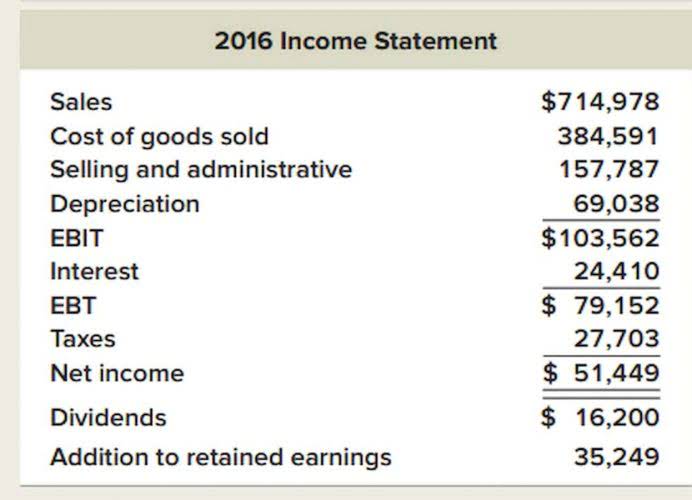No products in the cart.
Retained Earnings Formula What Is It, How To Calculate

As such, some firms debited contingency losses to the appropriation and did not report them on the income statement. Retained earnings are also known as accumulated earnings, earned surplus, undistributed profits, or retained income. Retained earnings are reported in the shareholders’ equity section of a balance sheet.
What is the net income of a business?
On the other hand, when a company generates surplus income, a portion of the long-term shareholders may expect some regular income in the form of dividends as a reward for putting their money into the company. Traders who look for short-term gains may also prefer dividend payments that offer instant gains. Retained earnings are also called earnings surplus and represent reserve money, which is available to company management for reinvesting back into the business. When expressed as a percentage of total earnings, it is also called the retention ratio and is equal to (1 – the dividend payout ratio).
Create a Free Account and Ask Any Financial Question

The last two are related to management decisions, wherein it is decided how much to distribute in the form of a dividend and how much to retain. This reduction happens because dividends are considered a distribution https://www.bookstime.com/ of profits that no longer remain with the company. Retained earnings act as a reservoir of internal financing you can use to fund growth initiatives, finance capital expenditures, repay debts, or hire new staff.
Example of a stock dividend calculation

This document is essential as you learn how to calculate retained earnings and other equities. This line item reports the net value of the company—how much your company is worth if you decide to liquidate all your assets. Retained earnings are a clearer indicator of financial health than a company’s profits because you can have a positive net income but once dividends are paid out, you have a negative cash flow.
- Equity refers to the total amount of a company’s net assets held in the hands of its owners, founders, partners, and shareholders (residual ownership interest).
- When a company generates net income, it is typically recorded as a credit to the retained earnings account, increasing the balance.
- The company’s retained earnings calculation is laid out nicely in its consolidated statements of shareowners’ equity statement.
- Retained earnings are affected by an increase or decrease in the net income and amount of dividends paid to the stockholders.
- It is a key indicator of a company’s ability to generate sales and it’s reported before deducting any expenses.
- Negative retained earnings may be a reflection of a company’s financial performance.
How To Calculate?
Although most mature companies enforce a stable dividend policy, most companies have their directors dictate how much in dividend payments to distribute and how much money to reinvest. Net Income is the profit your company made during the current period after all expenses have been deducted from revenues. You can retain earnings, pay a cash dividend to shareholders, or choose a hybrid solution that addresses both of those. The details are up to you, and you should use what you’ve learned here to make smart decisions regarding retained earnings and the future of your business. You can stay on top of your earnings, get accurate reports, and easily track transitions with QuickBooks. Shareholder’s equity section includes common stock, additional paid-in capital, and retained earnings.
Try QuickBooks Accounting Software for Small Businesses Free for 30 Days

If your business currently pays shareholder dividends, you’ll need to subtract the total paid from your previous retained earnings balance. If you don’t pay dividends, you can ignore this part and substitute $0 for this portion of the retained earnings formula. Now your business is taking off and you’re starting to make a healthy profit which means it’s time to pay dividends. A strong retained earnings figure suggests that a company is generating profits and reinvesting them back into the business, which can lead to increased growth and profitability in the future. You’ll want to find the financial statements section of a company’s annual report in order to find a company’s retained earnings balance and all the supporting figures you’ll need to complete the calculation. Retained earnings are recorded on the company’s balance sheet under shareholders’ equity, showing how much profit has been reinvested in the business rather than paid out to shareholders.

What is the difference between retained earnings and revenue?
- Overall, retained earnings empower small business owners to maintain control over their company’s finances and strategically invest in its future.
- Understanding how to find retained earnings is key to assessing a company’s financial performance.
- Retained earnings are the profits a company has earned and retained over time, while reserves are funds set aside for specific purposes, like contingencies or dividends.
- As the formula suggests, retained earnings are dependent on the corresponding figure of the previous term.
- Let’s say that in March, business continues roaring along, and you make another $10,000 in profit.
- This result is your net income, showing what the company earns after covering all its costs.
- The steps to calculate retained earnings on the balance sheet for the current period are as follows.
Revenue is the total income you make from sales before deducting operating expenses, taxes, and dividend payouts. Business revenue is calculated period by period and recorded at the top of your income statement. Scenario 2 – Let’s assume that Bright Ideas Co. begins a new accounting period with $250,000 in retained earnings. When the accounting period is finalized, the directors’ board opts to pay out $15,000 in dividends to its shareholders. When lenders and investors evaluate a business, they often look beyond monthly net profit figures and focus on retained earnings. This is because retained earnings provide a more comprehensive overview of the company’s financial stability and long-term growth potential.
In other words, assume a company makes money (has net income) for the year and only distributes half of the profits to its shareholders as a distribution. The other half of the profits are considered how to solve for retained earnings retained earnings because this is the amount of earnings the company kept or retained. Thus, it is that part of the profit that the company retains with itself as a source of funds.
- As a result, the firm will be less able to pay a dividend than before the purchase was accomplished.
- Retained earnings are calculated by subtracting dividends from the sum total of retained earnings balance at the beginning of an accounting period and the net profit or (-) net loss of the accounting period.
- This means that in order to calculate RE for the current accounting period, you’ll need to know your ending balance from the prior period.
- Let’s say that the net income of your company for the current period is $15,000.

For our retained earnings modeling exercise, the following assumptions will be used for our hypothetical company as of the last twelve months (LTM), or Year 0. If significant capital investments are anticipated, retaining earnings to cover these costs can be more advantageous than external financing. Stable companies might retain more earnings as a safeguard against economic downturns, while those with less risk may distribute more dividends. We put together a list of the best, most profitable small business ideas for entrepreneurs to pursue in 2024.